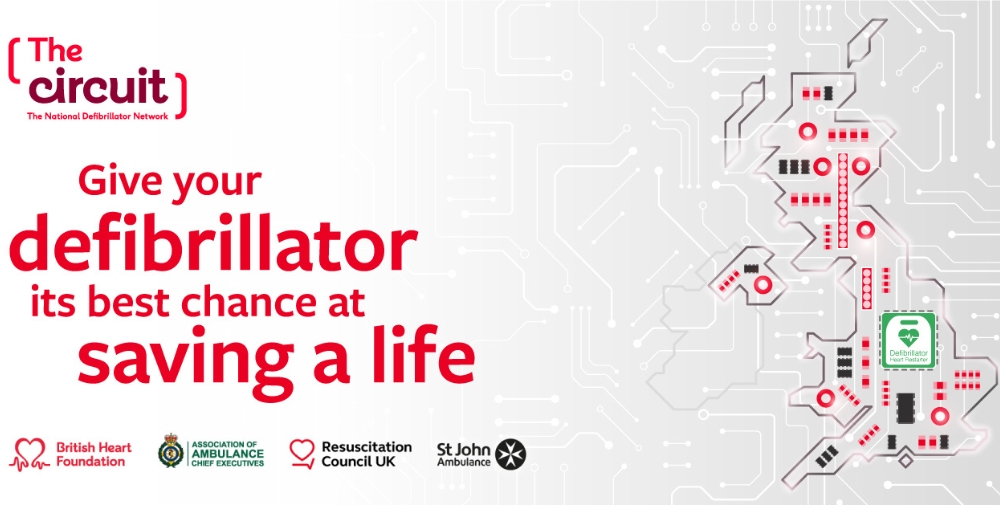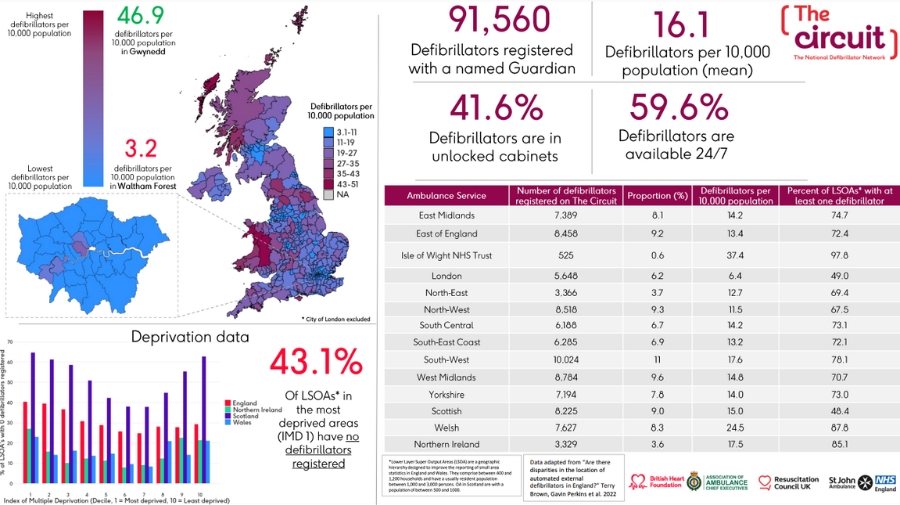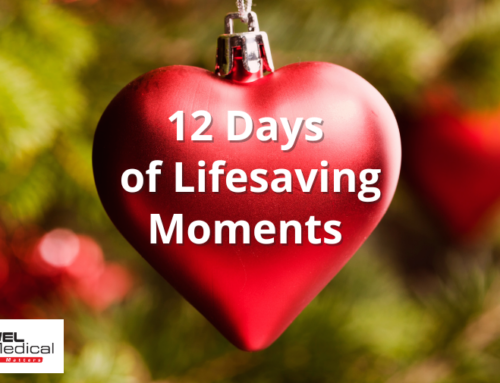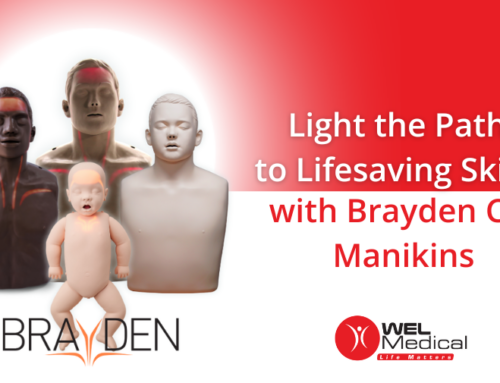Source: Resuscitation Council UK
In the UK, the need for a cohesive and well-organised network of Automated External Defibrillators (AEDs) has long been clear. Cardiac arrests can happen at any moment, and having immediate access to an AED can significantly enhance the chances of survival.
The CircuitThe Circuit, a life-saving initiative, bridges gaps between communities, businesses, and public spaces through a comprehensive network of registered defibrillators. This network strengthens the emergency response capabilities of the UK as a whole, empowering individuals to act swiftly and effectively during cardiac emergencies within their communities.
Here, we’ll explore what the Circuit achieves and look at the strategy behind the UK’s national defibrillator network.
The Fundamental Role of The Circuit
The success of The Circuit is rooted in its comprehensive involvement and accurate data management. Everyone can contribute to and benefit from The Circuit – from individuals and small businesses to larger organisations and public sector bodies. The registration process is straightforward yet vital.
By registering an AED with The Circuit, guardians ensure that their device is visible to emergency services. Without proper registration, an AED nearby might remain unused because emergency services are unaware of its existence when urgently required.
Types of Accounts
When it comes to registering for The Circuit, there are two types of accounts available: single guardian accounts and multiple guardians accounts.
A single guardian account is ideal for local businesses, community groups, and small organisations that have fewer than five defibrillators primarily serving a local area.
A multiple guardians account is designed for larger entities such as retail chains, national charities, and public sector organisations with five or more defibrillators distributed across extensive geographical regions.
The Registration Process
Guardians need to provide essential information during the registration process. This includes the location details of the AED, incorporating specific surroundings, brand, model, and device serial number.
You’ll also need to specify the accessibility times and conditions, ensuring that emergency responders know when and how to access the device. It’s also important that the expiry dates of the electrode pads and the battery readiness indicators, such as green light status, are provided.
Linking AEDs with Emergency Services
Once an AED is registered, it becomes part of a centralised database accessed by emergency responders. This is one of the key strategies behind the UK’s national defibrillator network, as it allows an ambulance service to quickly locate and deploy the nearest AED, saving precious minutes in a life-or-death situation.
Guardians get regular reminders and updates about their AED’s maintenance status, which helps make sure that their devices are always in optimal condition and ready for use.
Why Swift Access Matters
Swift access to AEDs can dramatically increase the chance of survival for a cardiac arrest victim. The coordinated response network set up by The Circuit means every registered AED can be deployed quickly and effectively. This becomes particularly significant in rural or isolated areas where the arrival of emergency medical services might take longer.
Source: British Heart Foundation
Building a Safer and More Resilient Community
One of the strategies behind public AEDs being placed around the UK is the creation of a safe, healthy society. The Circuit empowers us to be proactive in emergency situations, possibly saving lives within our homes, community areas, and workplaces.
Stuarts Story
Stuart is the premises manager at the school where his son, Ethan, suffered a cardiac arrest at age 15 on the school playing fields. Stuart ran to the scene and found receptionist Maggie already performing CPR.
He joined in, administering rescue breaths and using a defibrillator on Ethan, which he had recently prepared. Ethan, diagnosed with a narrowed coronary artery, underwent successful heart bypass surgery and quickly recovered, going on to pursue blacksmithing and metalworking at college.
Stories like Stuart’s emphasise the importance of easy access to defibrillators, with Stuart claiming that “as soon as I remembered we had a defibrillator, I didn’t doubt the story would be okay.” Stuart went on to advocate registration through the Circuit, highlighting that “when you register a defibrillator, it is connected to the ambulance service so they can direct people to them in an emergency.”
Source: British Heart Foundation
Register Your AED with the Circuit Today
At WEL Medical, we believe passionately in empowering people and communities with the knowledge and tools to save lives. Our commitment goes beyond supplying defibrillators, and we provide comprehensive support to ensure you feel confident and prepared to use our products effectively.
By registering your defibrillator with the Circuit, you become an essential link in the chain of survival. This life-saving initiative connects your AED with local emergency services, ensuring swift and efficient deployment during cardiac emergencies.
Collaborate with us and our partners, including the British Heart Foundation, to help to make your communities safer. Join the movement and contact us today to find out more about how we can save lives together.






